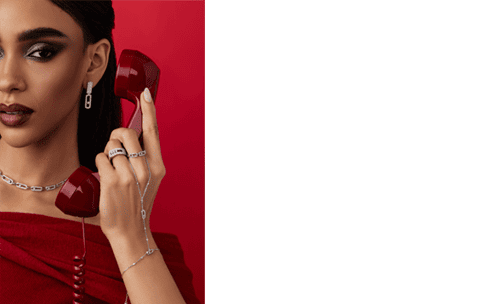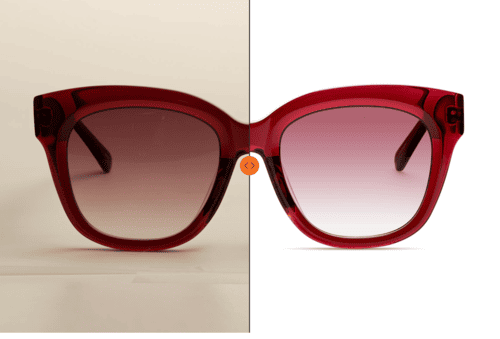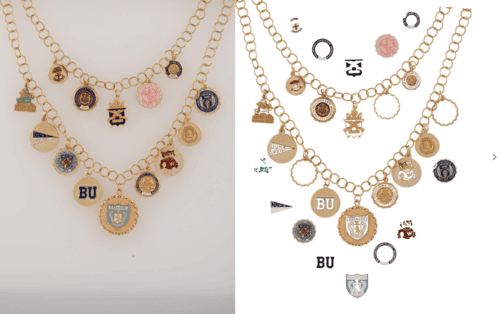New Trends in Retouching for eCommerce Product Photography

As eCommerce has grown, so has the sophistication of retouching. What used to be about making everything picture-perfect has evolved into a more nuanced approach that balances appeal with authenticity.
And there’s a good reason for that—product returns. Many business owners in e-commerce have felt the pain of dealing with returns caused by misleading photos. When what customers receive doesn’t match the images online, it hits your bottom line hard.
We’re at a point where advanced technologies like AI, combined with the rise of minimalist retouching, are reshaping the way visuals are handled. For e-commerce businesses, visuals are now the opportunity to differentiate, build trust, reduce returns, and ultimately boost conversions.
Minimalist Retouching Trends for Product Photos
You’ve probably heard the term “minimalist retouching” tossed around, but what does it mean for e-commerce? Simply put, it’s about enhancing a product’s natural look without making it look overly processed. Subtle tweaks like refining shadows, removing tiny flaws, and maintaining texture are what modern e-commerce business wants from a retouching team.
This doesn’t mean taking shortcuts, as minimalist retouching requires precision and restraint. It’s about doing just enough to make the product stand out without over-editing it into something unrecognizable.
Why Minimalist Retouching is a Growing Trend in eCommerce
Today’s customers can spot an over-retouched image from a mile away, and when they do, it can create doubt. Authenticity is key now more than ever. People want to know that what they see online is what they’ll actually receive. That’s why brands are shifting towards a more natural, “less is more” approach. Minimalist retouching delivers exactly that—realism with just the right amount of polish.
Take fashion photography: minimal edits might involve enhancing fabric texture to highlight quality while ensuring colors and stitching are true to life. Jewelry, which often involves high-detail shots, benefits from a light touch, ensuring every facet sparkles without making it look like something from a sci-fi film. Even in on-model photography, brands have moved away from airbrushing models to perfection, choosing to highlight real skin with subtle, well-placed corrections instead.

How to Keep Photos Looking Natural with Ethical Retouching
Natural-looking retouching hinges on a few key techniques. First, non-destructive editing ensures flexibility, allowing for adjustments without permanently altering the image. Layer masks enable retouchers to work on specific areas without compromising the whole photo. Blending layers and controlling highlights and shadows helps maintain the product’s texture and three-dimensionality.
Instead of relying on automated filters, experienced retouchers fine-tune details, like using tools strategically to enhance depth and light play. The goal is to enhance without masking the product’s true characteristics.
Over-editing can be a brand’s worst enemy. Over-smoothing erases important details like texture, while excessive brightness can make a product look flat. Similarly, unnatural lighting and poor color correction can give products an unrealistic glow, turning potential buyers away. Keeping edits subtle and focused on enhancing the product’s true appearance prevents these issues from creeping into the final image.

Speeding Up Photo Editing Workflows with Automation Tools
In eCommerce we always have deadlines. Maybe it’s a product launch or a seasonal campaign, when brands need hundreds, if not thousands, of images retouched quickly. With automated tools handling repetitive tasks like background removal or color correction, a retouching provider can deliver faster, without compromising quality. The beauty of automation is consistency, whether it’s 50 images or 500, you’ll get a uniform look across the board.
But don’t fall into the trap of thinking automation is the answer to everything. While it speeds things up, the personalized touch of a skilled retoucher is still crucial. Automation can handle the basics, but the retouching team must take the time to review key images individually. Products that require special attention, like intricate jewelry or high-end fashion, should never be left entirely to the machines.
Cloud-Based LenFlash System for Smooth Project Management
At LenFlash, we know efficiency matters. That’s why we built the LF Cloud, a system designed to streamline communication and keep projects on track. It allows you to stay involved, see updates in real-time, and ensure deadlines are met. For you, that means less back-and-forth and more time focusing on growing your business. The project management process should be as seamless as the retouching itself.
Social Media Retouching: Fast and Lightweight Edits for the Digital World
Why Social Media Demands a Different Approach to Retouching
Social media is fast-paced and visually driven. Platforms like Instagram, TikTok, and Pinterest require rapid content production, meaning that retouching needs to be quick, lightweight, and optimized for mobile screens. Users don’t have time to zoom in and scrutinize every pixel. What matters is that the product looks great at first glance, even on smaller screens.
Social media retouching often involves streamlining the process through templates and batch editing. Quick color corrections, optimized file sizes, and standardized crops ensure that images are ready for fast upload and still maintain their visual appeal. The aim is to create high-impact visuals with minimal processing time, allowing brands to maintain a constant presence on platforms that demand frequent updates.
Adapting Retouching for Various Social Platforms
Each platform has its own aesthetic and technical limitations. Instagram favors square and portrait ratios, while Pinterest prefers taller images. Meanwhile, TikTok prioritizes motion, where subtle editing enhances videos rather than static images. Mobile-friendly retouching requires that all visuals maintain clarity even at reduced resolutions, ensuring that the product looks sharp no matter the screen size.
Mobile Retouching in eCommerce Product Photography
Mobile retouching apps are built for speed and convenience, but it’s worth considering whether they’re the right fit for brands that sell products online, especially for those that rely heavily on the quality of their visuals to drive sales.
Mobile retouching tools are typically designed for lightweight edits. They’re perfect for quick adjustments like cropping, applying basic filters, and enhancing colors, but they lack the depth and precision that professional retouching software offers. These apps often don’t have the capability to handle more complex tasks, such as detailed texture refinement, shadow adjustments, or ensuring that a product’s true color and form are perfectly represented.
For eCommerce brands, the stakes are much higher. Customers rely on product images to make purchase decisions, and when the image quality is compromised, it’s more than just aesthetics at risk. Inaccurate or overly simplistic edits could lead to a mismatch between what the customer expects and what they receive, increasing return rates and damaging brand trust.
Related Read: Introduction to Mobile Phone Photography & Its Impact on Brands in E-Commerce
AI-Powered Editing for eCommerce Photos
How AI is Changing the Retouching Landscape
AI is disrupting the traditional retouching process by automating tasks that once took hours of manual labor. AI tools offer consistency, reducing and creating uniform images across entire product lines.
But here’s the important part: AI is a tool, not a replacement for the human touch. It works best when it's under the guidance of an experienced retoucher. AI can speed up the process, but it can’t make critical decisions about how to enhance a product’s unique features. A skilled retoucher controls and ensures the final images meet the brand’s quality standards.
Advantages of AI in eCommerce Product Retouching
Beyond speed, AI also ensures a high degree of precision, particularly when it comes to intricate tasks like edge detection or maintaining consistent lighting across a series of images.
With AI, your retouching provider can offer faster turnaround times, especially for repetitive tasks like ensuring consistent colors or cropping hundreds of images. However, the magic happens only when AI and human retouching are combined.
AI handles the grunt work, but skilled retouchers step in to refine the details. The blend of both ensures decent, high-quality results that a fully automated process simply can’t deliver. You should expect this balance from your retouching provider to guarantee that key images get the attention they deserve.
AI excels in areas such as precision cropping, color correction, and consistent adjustments across large image sets. But again, retouchers use AI as a tool to streamline workflows, but they remain in control, ensuring that every image reflects the brand’s visual standards. This approach guarantees consistency without losing the personal touch that makes product images stand out.

Elevate Your Brand with Expert Photo Retouching
LenFlash is a visual content studio with over 20 years of experience in eCommerce photography and retouching. Our longevity in the industry is a testament to our ability to stay ahead of trends while grounding our work in solid expertise. LenFlash understands that eCommerce is evolving rapidly, and they’ve continually adapted their services to meet the shifting demands of brands and consumers alike.
We combine the latest retouching trends, such as minimalist and social media-specific editing, with our deep-rooted knowledge of what works in eCommerce photography. This balance allows them to produce product images that are not only visually appealing but also effective in building trust with customers and driving conversions.
From large-scale projects to specialized requests, LenFlash ensures every image reflects the unique essence of the product, maintaining authenticity and delivering high-quality results that align with each brand's vision.














